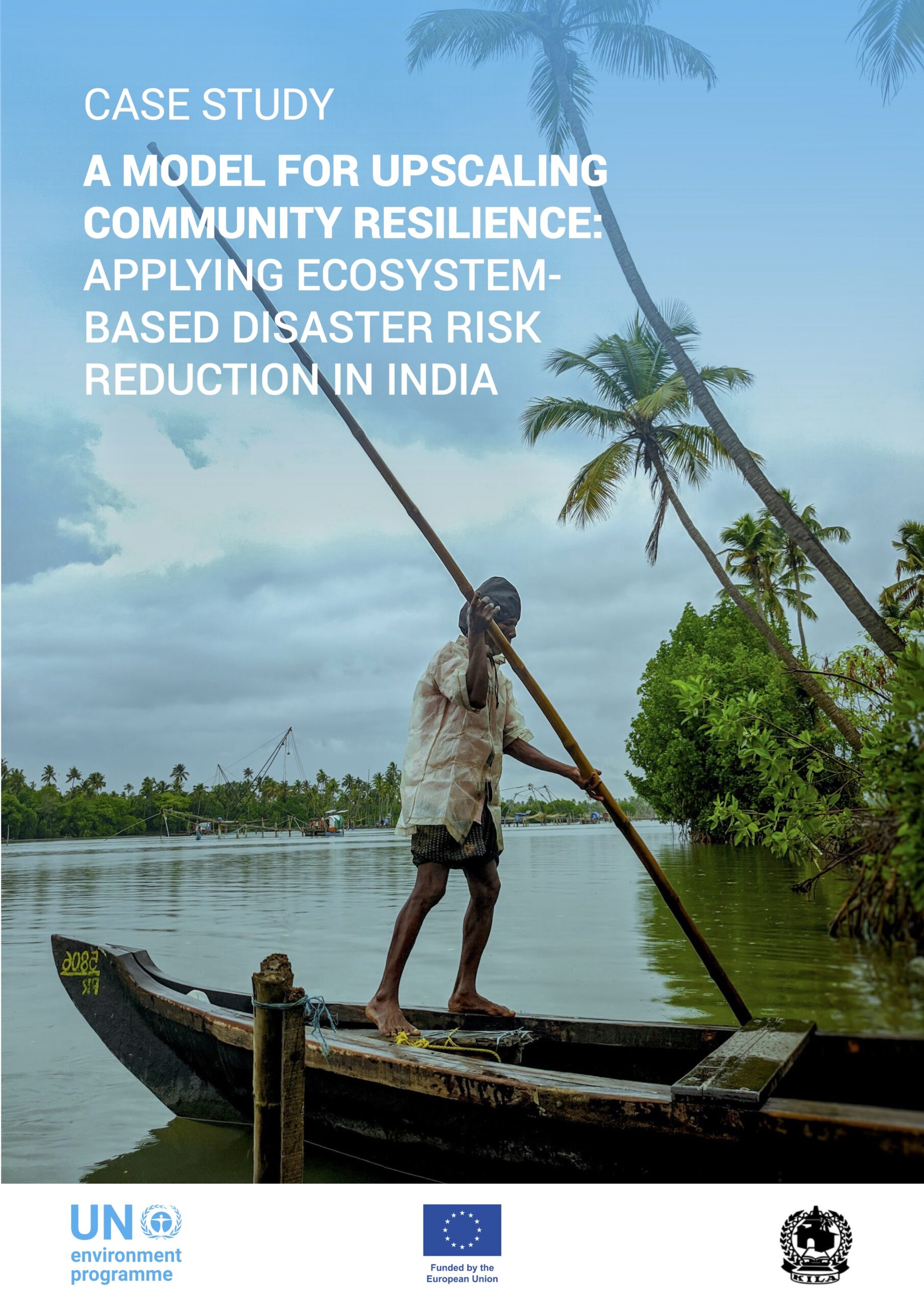A model for upscaling community resilience: applying Ecosystem-based Disaster Risk Reduction in India
Author : UNEP Eco-DRR teamPublications : Report
Published Date : 12 Aug,2023

Abstract
Around the world, policymakers and communities are seeking ways to strengthen their resilience to the increasing number of climate and disaster risks. Development programmes, including ‘cash-for-work’ initiatives, can be leveraged to provide livelihood benefits while also enhancing protection against future hazards. The effectiveness of Ecosystem-based Disaster Risk Reduction (Eco-DRR) in achieving such objectives has been widely documented. Also denoted as Nature-based Solutions (NbS), Eco-DRR approaches thus center on people to provide them with livelihood benefits while restoring or conserving vegetation. These examples include forests on steep slopes to reduce mountain hazards, coastal vegetation for reducing coastal hazards, and wetlands and rivers to reduce impacts from flooding. Hence, Eco-DRR provides a multitude of benefits, including carbon dioxide (CO2) sequestration. Eco-DRR provides a strategic approach in helping achieve mandates set out by international framework agreements such as the Sendai Framework for Disaster Risk Reduction (2015- 2030) and the Kunming-Montreal Global Biodiversity Framework. Eco-DRR has also been identified as one of five priorities by the G20 Indian Presidency Issue Brief on Disaster Risk Reduction (DRR).